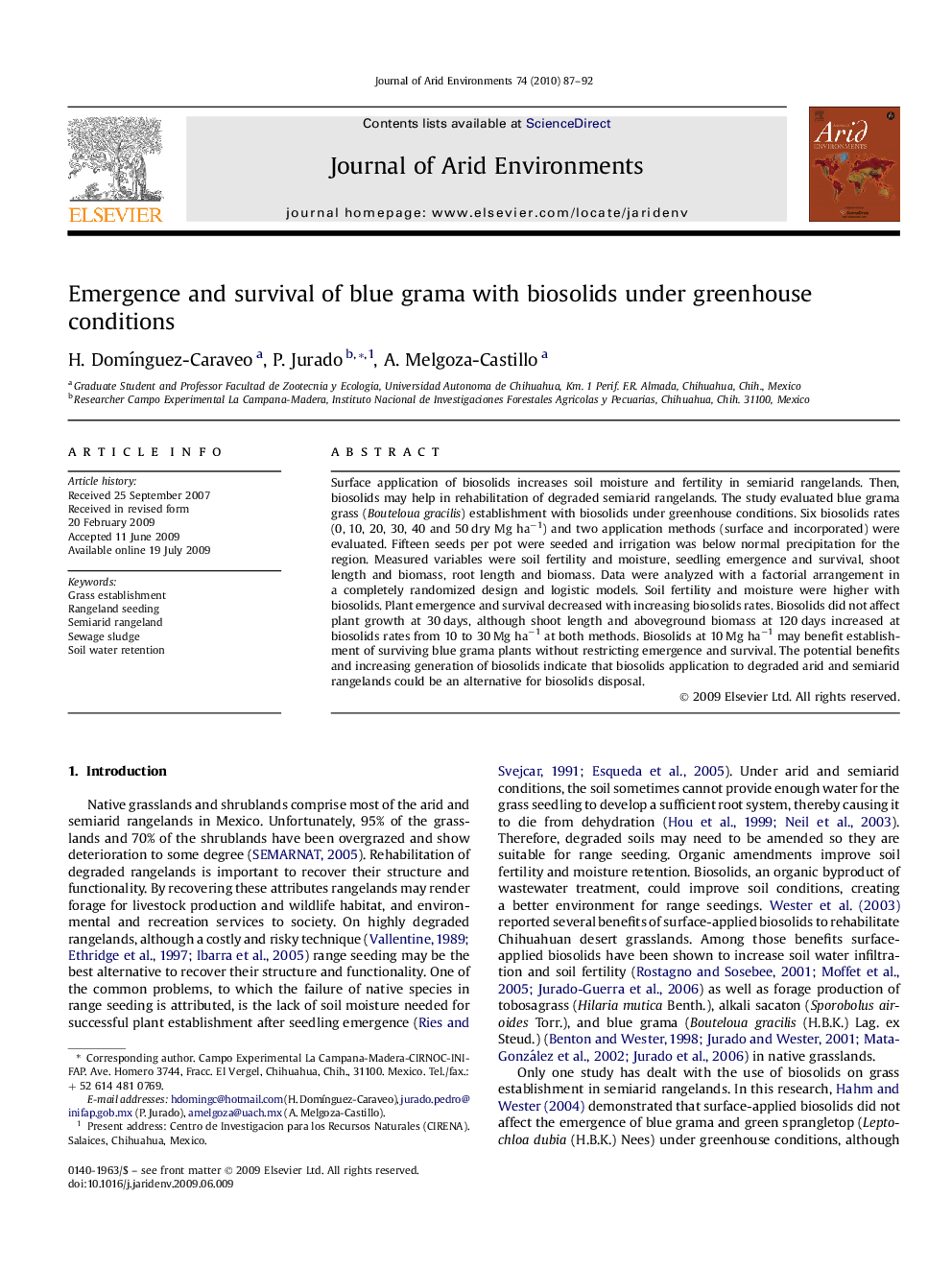| Article ID | Journal | Published Year | Pages | File Type |
|---|---|---|---|---|
| 4394344 | Journal of Arid Environments | 2010 | 6 Pages |
Surface application of biosolids increases soil moisture and fertility in semiarid rangelands. Then, biosolids may help in rehabilitation of degraded semiarid rangelands. The study evaluated blue grama grass (Bouteloua gracilis) establishment with biosolids under greenhouse conditions. Six biosolids rates (0, 10, 20, 30, 40 and 50 dry Mg ha−1) and two application methods (surface and incorporated) were evaluated. Fifteen seeds per pot were seeded and irrigation was below normal precipitation for the region. Measured variables were soil fertility and moisture, seedling emergence and survival, shoot length and biomass, root length and biomass. Data were analyzed with a factorial arrangement in a completely randomized design and logistic models. Soil fertility and moisture were higher with biosolids. Plant emergence and survival decreased with increasing biosolids rates. Biosolids did not affect plant growth at 30 days, although shoot length and aboveground biomass at 120 days increased at biosolids rates from 10 to 30 Mg ha−1 at both methods. Biosolids at 10 Mg ha−1 may benefit establishment of surviving blue grama plants without restricting emergence and survival. The potential benefits and increasing generation of biosolids indicate that biosolids application to degraded arid and semiarid rangelands could be an alternative for biosolids disposal.
